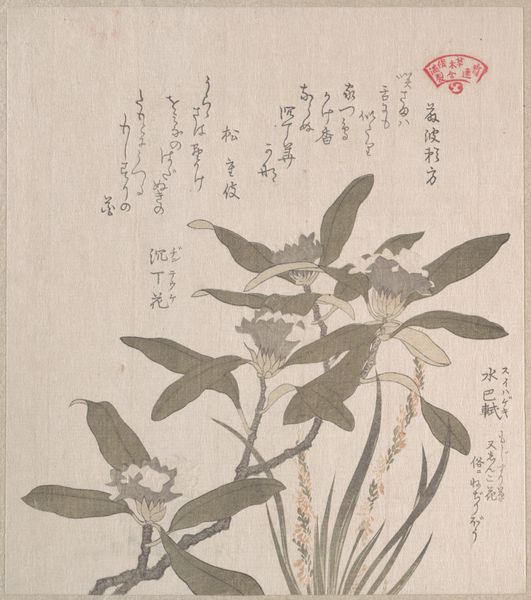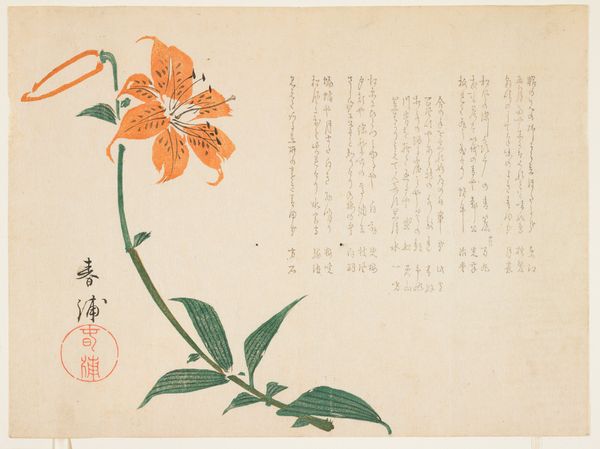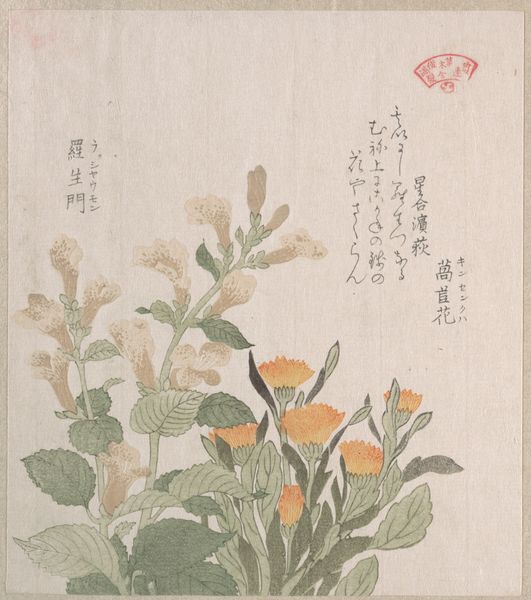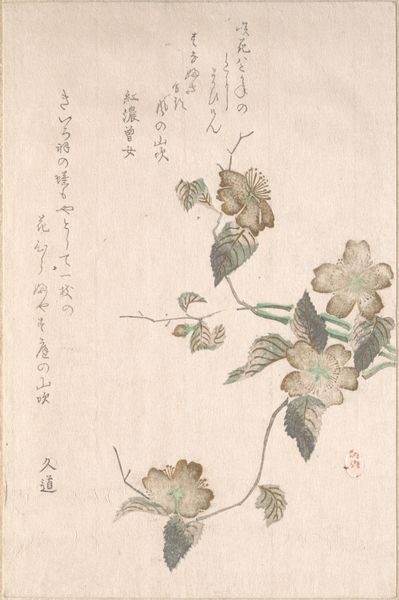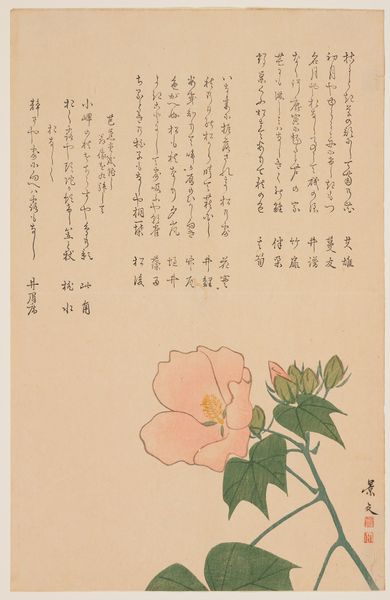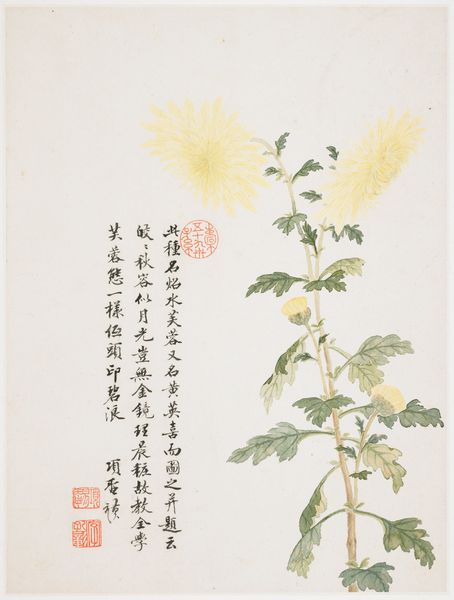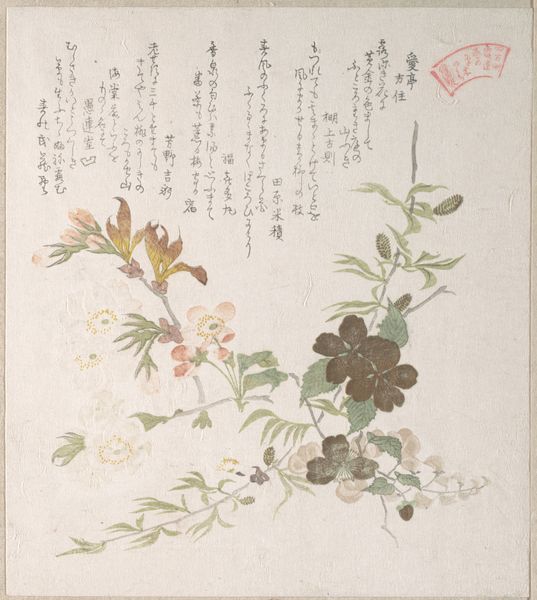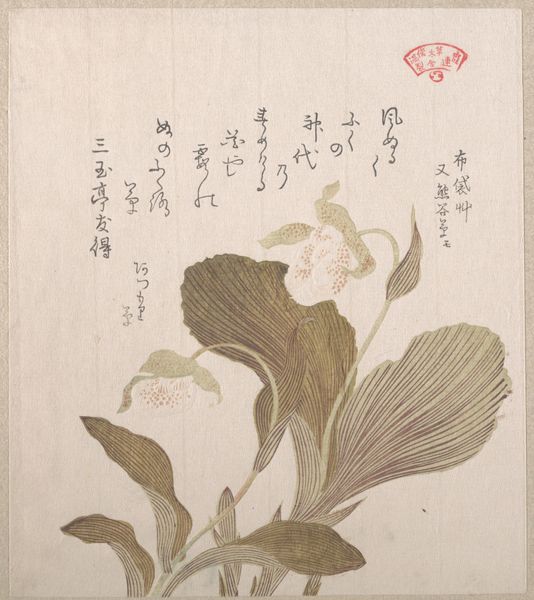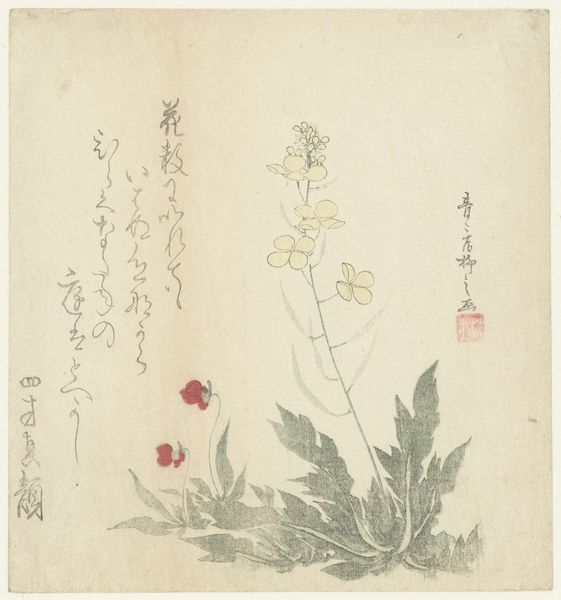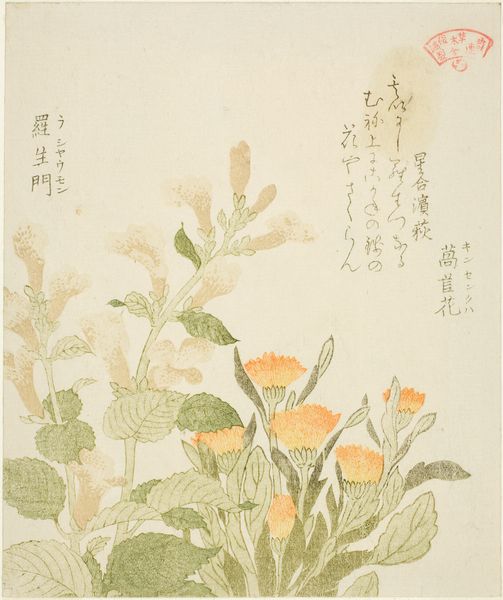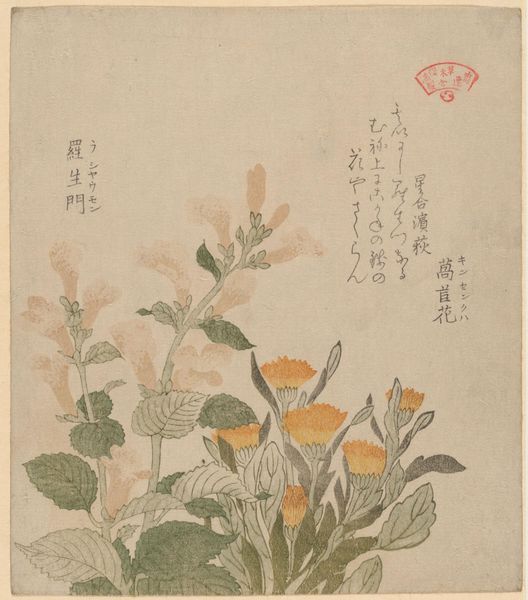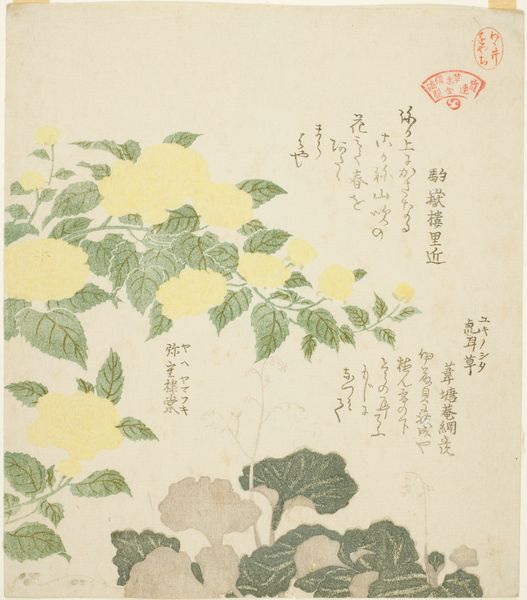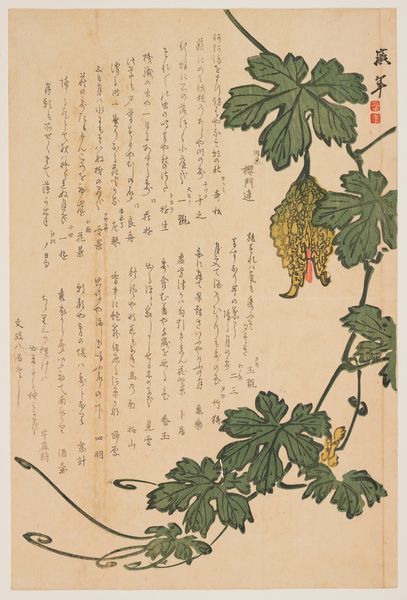
drawing, print, paper, watercolor, ink
#
drawing
#
water colours
#
ink paper printed
# print
#
asian-art
#
ukiyo-e
#
paper
#
watercolor
#
ink
#
botanical drawing
#
botanical art
#
watercolor
Dimensions: 15 x 10 in. (38.1 x 25.4 cm) (image, sheet)
Copyright: Public Domain
Editor: Here we have Sakurai Baishitsu’s “Purple Flower,” a watercolor print from the 1830s currently held at the Minneapolis Institute of Art. I’m immediately struck by the contrast between the delicate flower and the dense calligraphy. What do you see in this piece? Curator: This image invites us to consider the relationship between artistic expression and social context, especially within the ukiyo-e tradition. Beyond the literal depiction of a flower, how does this image reflect or challenge the socio-political environment in which Baishitsu was working? The flower, of course, possesses universal significance and we must also consider gender. What’s your perspective on this juxtaposition of text and image, considering its possible relationship to power? Editor: I see your point. The calligraphy, by taking up the majority of the space, seems to almost overshadow the flower, visually enacting a power dynamic. Is it possible that Baishitsu is commenting on the dominance of language and intellectualism in his society, even while working within those conventions? Curator: Exactly! Consider the rigid social hierarchies of the time. Is the delicate nature of the flower perhaps suggestive of a specific view, perhaps even that of women within society at the time? We need to consider this relationship as a political or sociological act that can be viewed within the structures of history and gendered identity. The layering here makes the botanical rendering anything but passive. Editor: I hadn’t thought of it that way. The print now seems far more nuanced, almost as if it's subverting expectations of what a botanical drawing from that era "should" be. Thank you for that insight. Curator: Precisely. Hopefully you can appreciate it for how it stands in intersectional conversation with artistic norms and the ever changing, diverse cultural discourse.
Comments
No comments
Be the first to comment and join the conversation on the ultimate creative platform.
